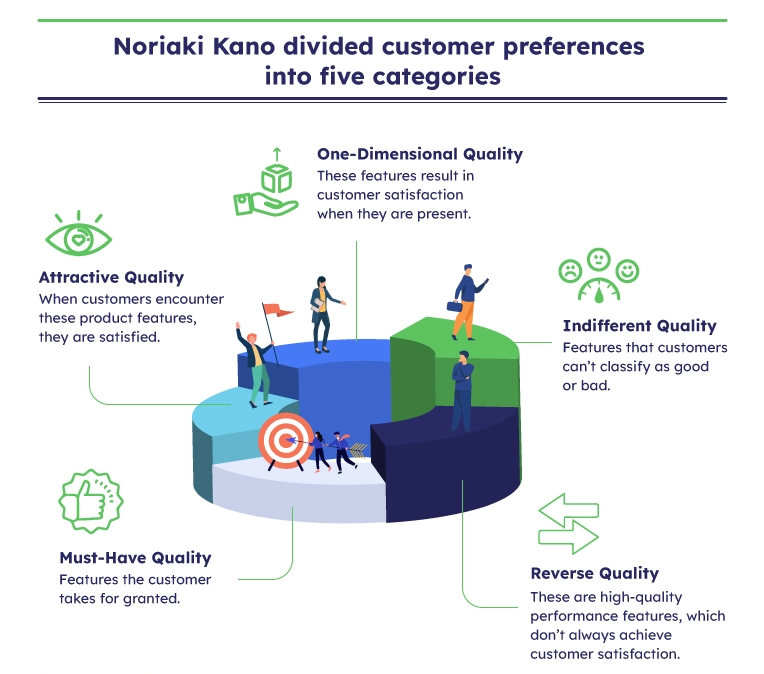What is the Kano Model?
The Kano Model is a theory for product development and customer satisfaction that classifies customer preferences into five categories.
Detailed Explanation
Developed by Professor Noriaki Kano in the 80s, the Kano Model helps businesses understand how to improve their product by providing a framework for customer satisfaction. The model categorizes customer preferences into five groups: Attractive, One-Dimensional, Must-Be, Indifferent, and Reverse.
In the context of SaaS, the Kano Model can guide feature prioritization. For instance, “Must-Be” features are the core functionalities that customers expect from a SaaS product, while “Attractive” features could be innovative functionalities that surprise and delight users.

Why It Matters?
This model is a powerful tool for SaaS businesses as it helps to decide which features to develop to improve customer satisfaction and remain competitive. It can result in more effective resource allocation, better product-market fit, and ultimately higher customer retention.
Potential Misunderstandings
A common misconception is that the Kano Model only applies to product features. In reality, it can also be used to analyze services, business processes, and other non-product aspects.
Frequently Asked Questions
1. How does the Kano Model apply to SaaS?
The Kano Model can guide SaaS businesses in prioritizing feature development. It helps to distinguish between core features that are expected, differentiators that can create customer delight, and features that might be unnecessary.
2. Is the Kano Model still relevant today?
Yes, the Kano Model remains a valuable tool for understanding customer satisfaction and guiding product development, especially in fast-moving industries like SaaS.
